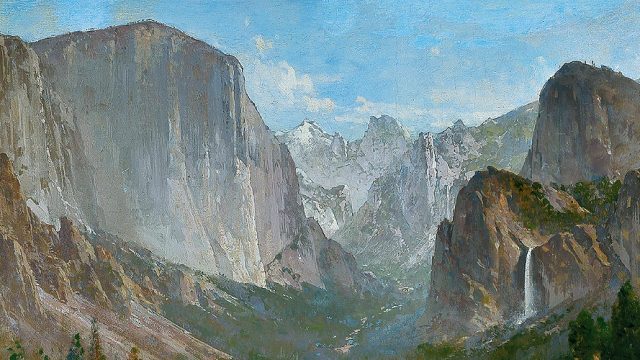Yosemite National Park was in the news recently when US President Barack Obama travelled there with his family for a hike. While there, Obama spoke about the importance of protected wilderness areas and the threat posed to such beautiful national monuments by climate change.
Before the Yosemite Valley became the world’s first national park a hundred years ago, it had been visited by successive waves of white travellers and conquerors, at first due to the Californian Gold Rush, and later when the native Ahwaneechee people of the valley were hunted and persecuted by the US Army, and herded into reservations.
In the years following their visit in 1855, Yosemite’s stunning natural beauty was broadcast via articles and paintings published in national magazines by the entrepreneur and writer James Hutchings and the artist Thomas Ayres. This fuelled a second wave of tourists, which included the painter Thomas Hill, who visited the area in 1865, and composed a number of oil paintings of the valley. Born in England and settled first in Massachusetts and then in San Francisco, he visited the valley quite a few times. During his first visit, he was awestruck by the grandeur of the valley. A keen observer, he painted the valley en plein air, a technique that roughly means painting an outdoors scene while standing in it. He was also struck by the easy relationship that the native tribes had with their surroundings, often including them in the frame both for scale and also to create a sense of partnership between man and nature. This painting, labelled Indians at Campfire, Yosemite Valley, exemplifies Hill’s art, showcasing the classic Yosemite view dominated by granite giants such as El Capitan and Half Dome. Today, as such wildernesses are increasingly threatened by man-made climate change, Hill’s paintings provide a moving glimpse of a vanishing natural world.




